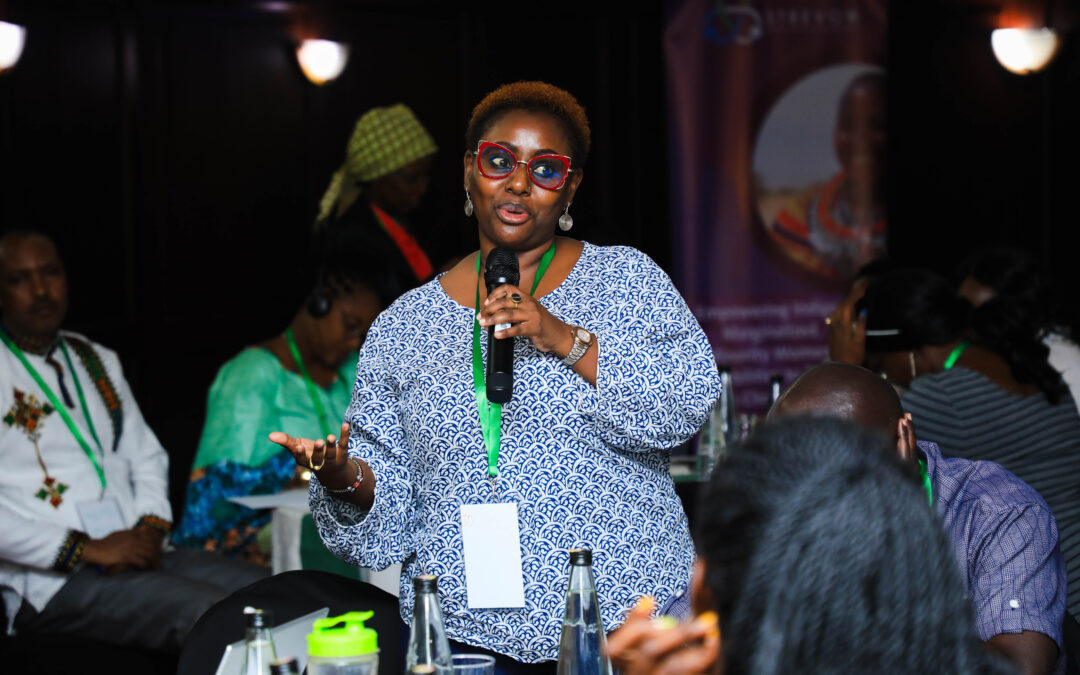Climate change is not just an environmental issue—it is a social justice issue that disproportionately affects marginalized groups, including women with disabilities. Despite their unique vulnerabilities, these women are often excluded from climate decision-making processes, policy formulation, and leadership roles.
To build a truly inclusive and sustainable future, women with disabilities must not only be included in climate discussions but also empowered to take leadership positions in shaping climate action. This blog explores the barriers they face, the importance of their leadership, and strategies to foster greater inclusion.
The Current State: A Double Burden of Exclusion
Women with disabilities face a dual burden of marginalization—both as women and as individuals with disabilities. This exclusion extends to climate policy and leadership, where their voices are rarely heard. Some key factors contributing to this exclusion include:
1. Limited Representation in Climate Leadership
Women with disabilities are significantly underrepresented in climate governance structures, from local environmental committees to international climate negotiations. A study by UN Women highlights that women, in general, remain underrepresented in climate decision-making, and the gap is even wider for those with disabilities.
2. Lack of Accessibility in Climate Governance Spaces
Climate conferences, policy forums, and leadership training programs often fail to accommodate women with disabilities. Barriers include inaccessible venues, lack of sign language interpretation, and absence of materials in braille or easy-to-read formats.
3. Economic and Social Barriers
Many women with disabilities face higher unemployment rates, limited financial independence, and restricted access to education. These factors limit their ability to participate in leadership programs or advocacy initiatives.
4. Discrimination and Gender Bias
Societal perceptions often view women with disabilities as dependent rather than as capable leaders. This bias prevents them from being considered for leadership roles in climate organizations and governance bodies.
5. Invisibility in Climate Data and Research
Most climate research does not disaggregate data by gender and disability, making it difficult to develop policies that address their specific needs. Without data, their experiences remain unrecognized in climate discourse.
Why Women with Disabilities Must Be in Climate Leadership
Ensuring that women with disabilities take leadership roles in climate governance is not just about inclusivity—it is about making climate policies stronger, more effective, and more equitable. Here’s why their leadership is essential:
1. Addressing Unique Climate Challenges with Firsthand Experience
Women with disabilities bring invaluable lived experiences to climate leadership. They understand the barriers to accessing climate adaptation measures and can advocate for solutions that are truly inclusive.
2. Creating More Inclusive Climate Policies
Without representation, policies risk being designed without considering accessibility and inclusion. When women with disabilities are part of climate leadership, policies are more likely to incorporate universal design principles, ensuring that all people benefit from climate action.
3. Strengthening Community Resilience
Communities that empower women with disabilities tend to be more resilient. Their leadership in local adaptation projects, disaster preparedness, and policy-making ensures that no one is left behind in climate responses.
4. Promoting Gender and Disability Justice
Climate change exacerbates social inequalities. By placing women with disabilities in leadership positions, societies move closer to achieving gender equity, disability rights, and climate justice simultaneously.
5. Enhancing Global Climate Advocacy
Women with disabilities can be powerful advocates in international climate negotiations, ensuring that disability-inclusive climate strategies are included in global frameworks like the Paris Agreement.
How to Move from Exclusion to Inclusion
Addressing the barriers that keep women with disabilities from climate leadership requires intentional actions at multiple levels. Here are some key strategies:
1. Implement Inclusive Climate Policies
Governments and organizations must embed disability rights into national and international climate policies. Climate action plans should explicitly outline measures to support women with disabilities in leadership roles.
2. Ensure Accessibility in Climate Leadership Spaces
- Climate summits and policy meetings must be fully accessible, providing assistive technologies, sign language interpretation, braille materials, and digital accessibility tools.
- Online and hybrid participation options should be available to allow women with disabilities to engage in discussions without travel barriers.
3. Promote Leadership Development Programs
- Climate organizations should establish leadership training programs tailored for women with disabilities.
- Scholarships and mentorship programs should be created to support their participation in climate governance.
4. Strengthen Advocacy and Representation
- Disability rights organizations should collaborate with climate advocacy groups to amplify the voices of women with disabilities.
- Women with disabilities should be appointed to leadership positions in environmental agencies, climate task forces, and international climate negotiations.
5. Improve Data Collection and Research
- Governments and research institutions must collect disaggregated data on the impact of climate change on women with disabilities.
- Studies should be conducted on the contributions of women with disabilities in climate leadership to highlight best practices and inform policy.
6. Provide Financial and Logistical Support
- Funding should be allocated for travel, assistive devices, and personal support services to enable women with disabilities to attend climate leadership events.
- Grants should be provided to women-led disability advocacy groups working on climate action.
Conclusion
For too long, women with disabilities have been excluded from climate leadership. This exclusion weakens climate policies, perpetuates inequalities, and limits global efforts to create a just and sustainable future.
It is time to shift from exclusion to inclusion by ensuring that women with disabilities have equal opportunities to participate in climate governance. Their perspectives, expertise, and leadership are essential for shaping policies that work for everyone.
Governments, organizations, and civil society must take action now to remove barriers, provide accessibility, and actively include women with disabilities in climate decision-making. When these women lead, climate action becomes stronger, more inclusive, and more effective.
The future of climate resilience depends on the full participation of all voices—especially those that have been historically marginalized. Let’s work together to make climate leadership truly inclusive.

